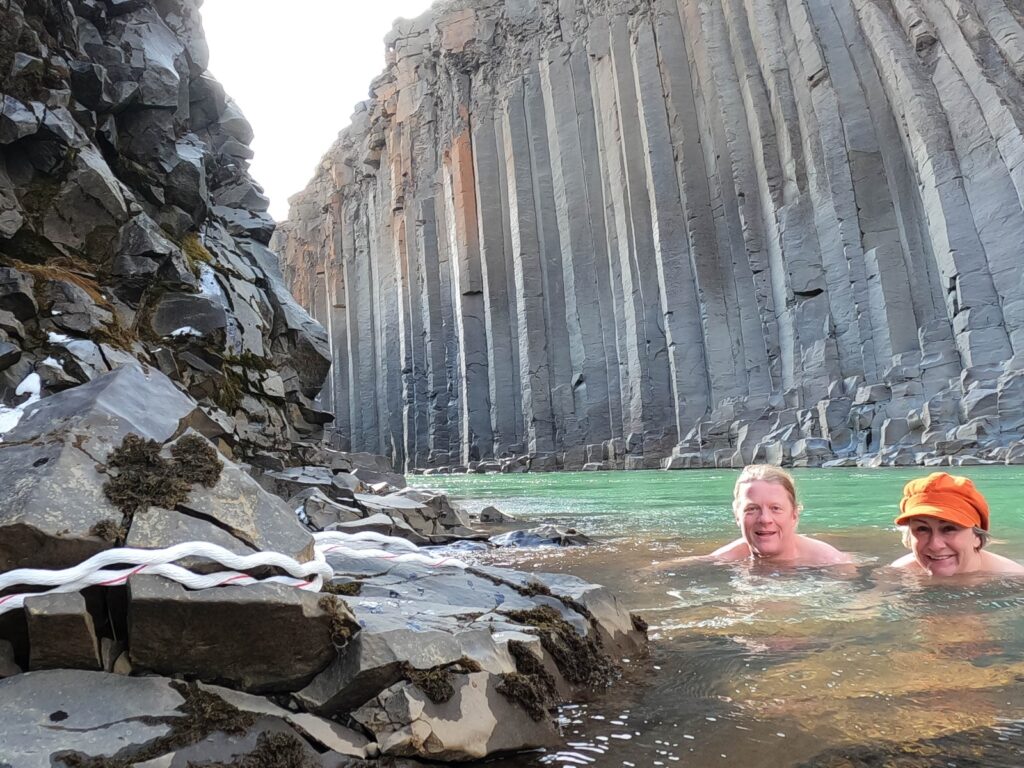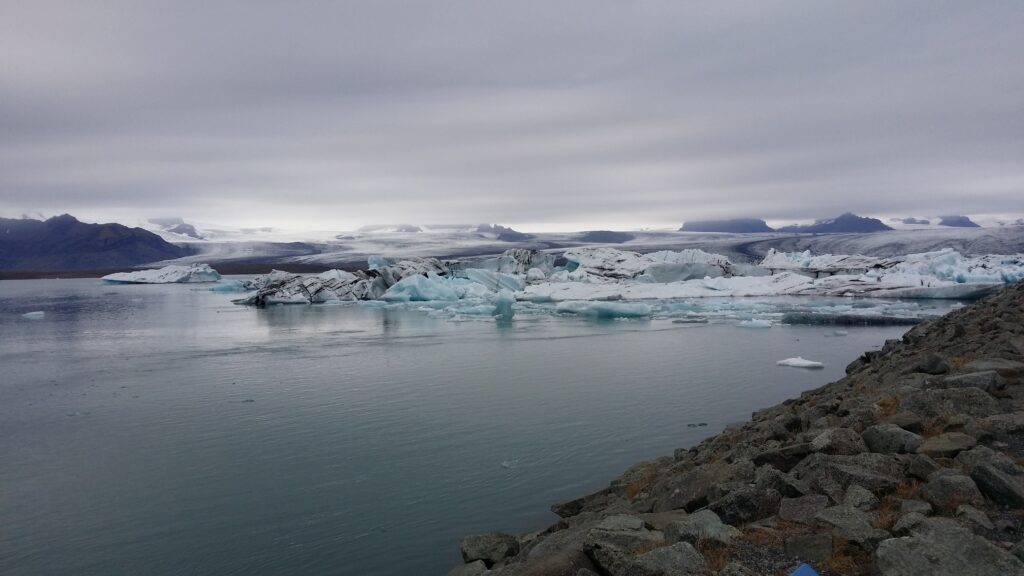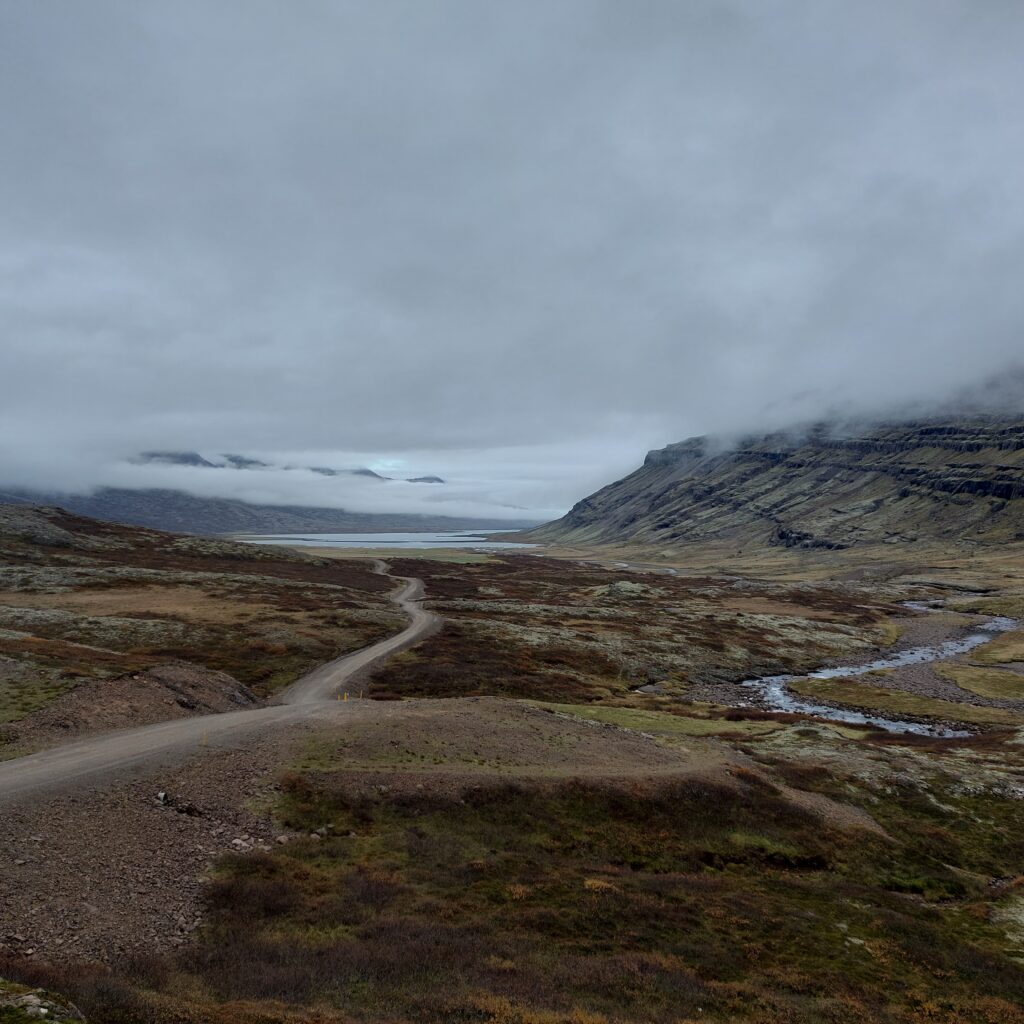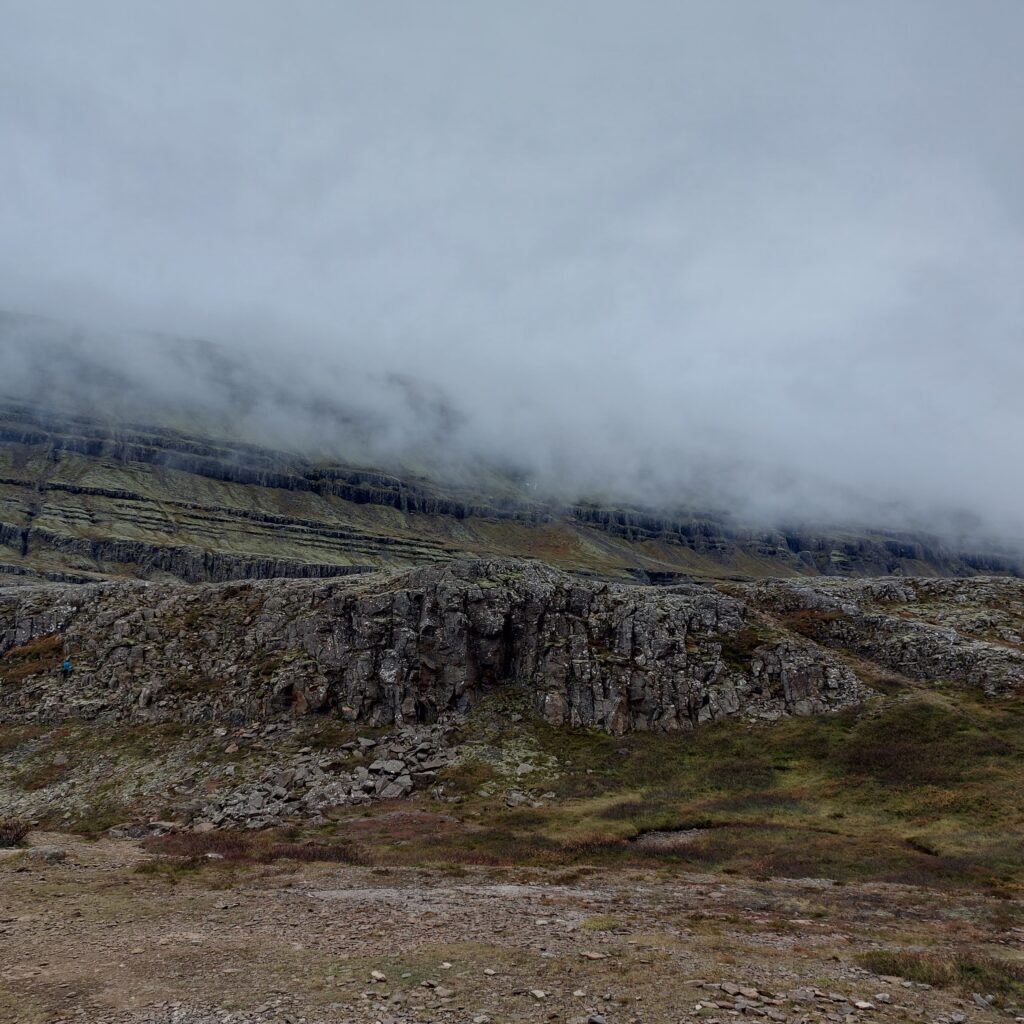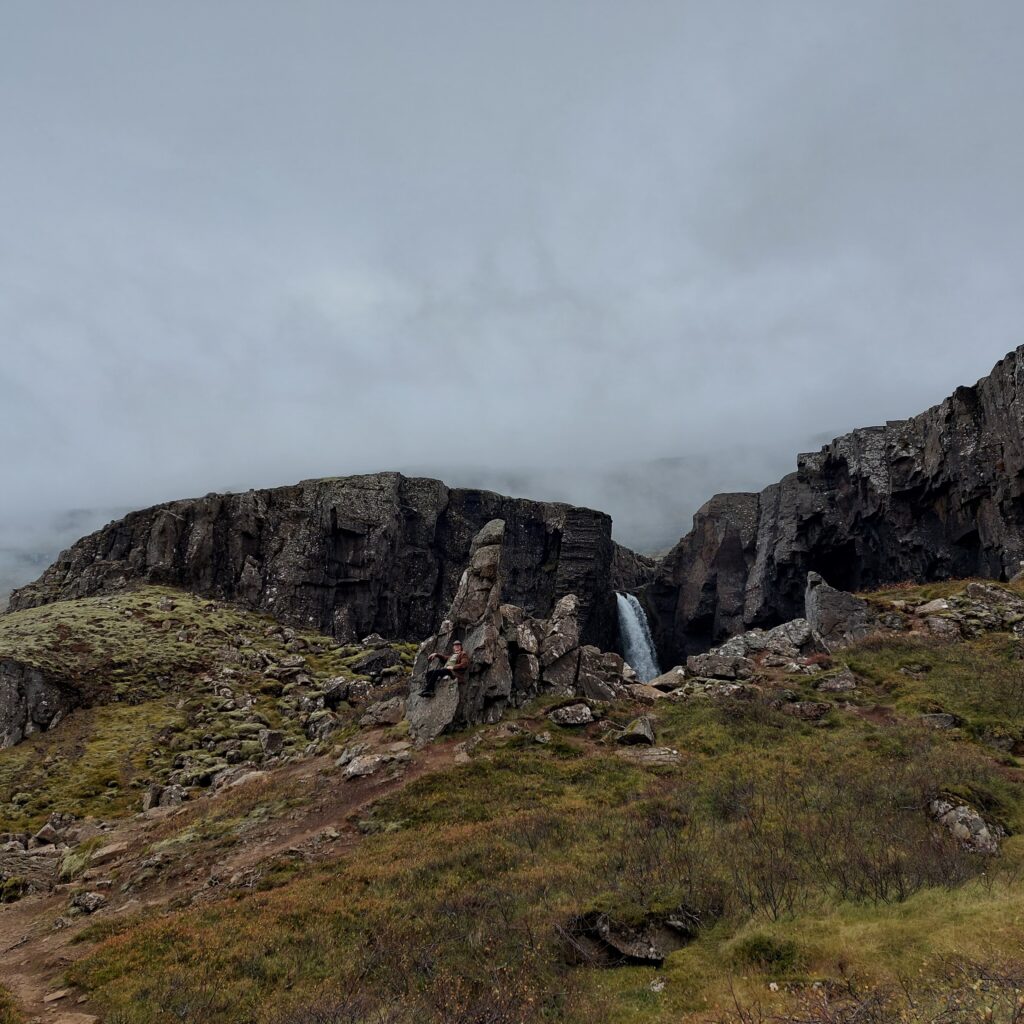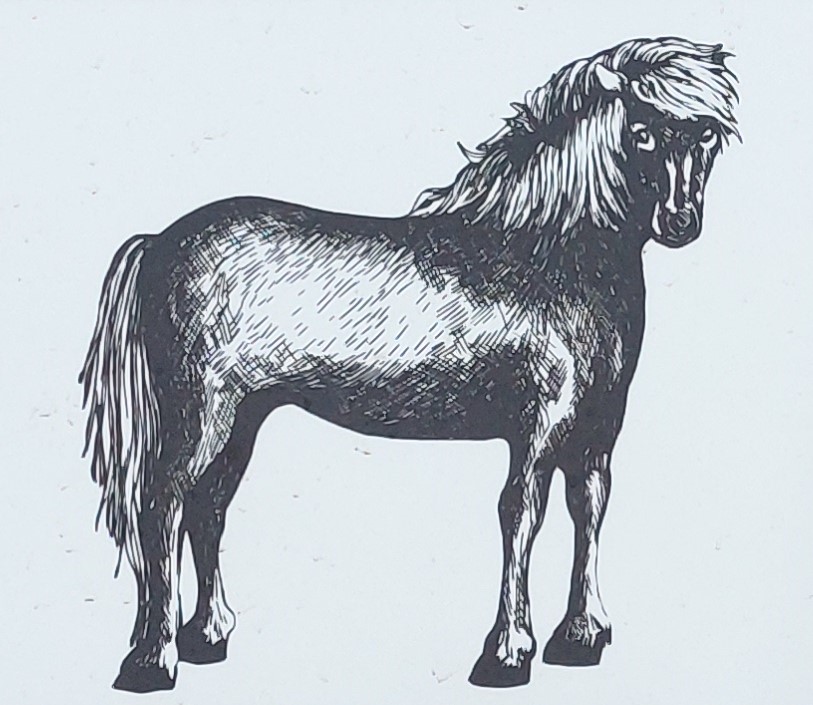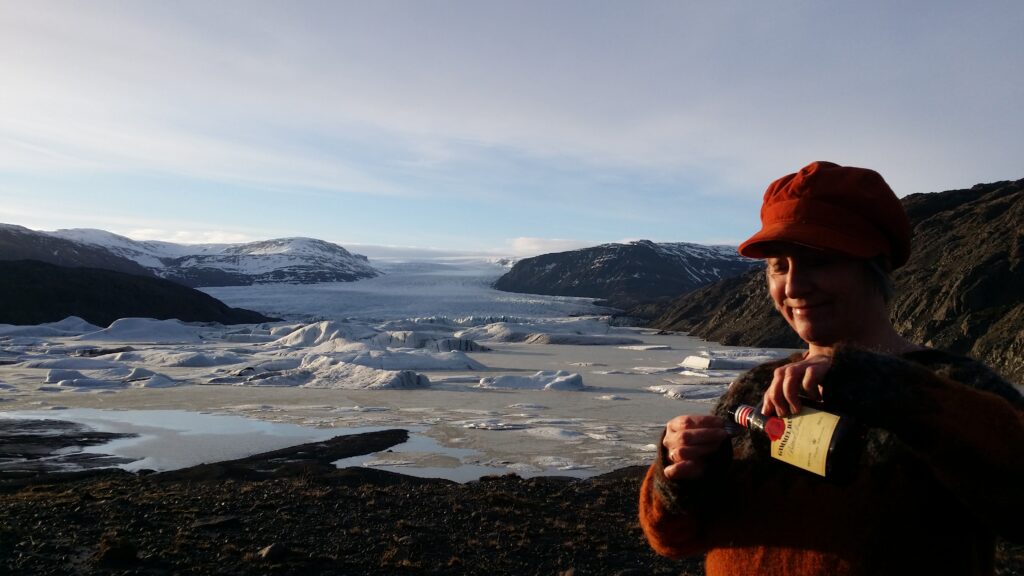In the Icelandic region of Austurland, the river Miðhúsaá flows west towards Egilsstaðir and then finally ends up in Lagarfljót. Except during the snow melting period, this is not a big river, more like a stream. But in the spring, on the other hand, it is much larger. Miðhúsaá is worth a short detour, because there you can enjoy the view of two different waterfalls: Fardagafoss and Gufufoss.

3-400 meters uphill from the car park, the first waterfall appears, the so-called Gufufoss (the Steam Waterfall). According to tradition, a female troll lived in the cave behind Fardagafoss further up. She had a pot of gold hanging in Gufufoss, on the ledge between the two Gufufoss waterfalls. Can you see it? It’s hard to spot, and that’s why no one has ever gotten hold of it.

In ancient times, you were bound for 6 months or a year if you took work on a farm or a house as a servant. It was only allowed to leave during a period of 3-4 specific days in the spring or autumn to take a job elsewhere. These days were called ‘Fardagar’ (travel days). The spring travel days used to be around the 1st of May. Everyone who did not own land had a responsibility to have permanent work and a place to live. Vagrancy was forbidden and could be punished with fines.
In Norway, we used to have similar laws. The 14th of April was travel day, i.e. the day when you could end leases and employment agreements. The term travel day is still used in Norway when it comes to leasing land or farms. Also Scotland did indeed have the same tradition in ancient times. Can ‘làithean siubhail‘ be a tradition from the Viking era?
Well, what does this have to do with the Miðhúsaá waterfall? That’s when Fardaga waterfall is at its most splendid! In the spring, the travel days will coincide with the snow melting and extended rivers.

The cave behind Fardagafoss is reasonably large, but it used to be even larger in earlier times, before the river slowly started to fill it with stones. One day a cat disappeared behind the waterfall. It was later found again in another Gufufoss, at Seyðisfjörður. The conclusion is that there is a tunnel between Fardagafoss and the other Gufufoss (these kind of stories are known from many places). The distance between them is 19 km, so it’s quite a job done by the troll (or the cat), digging that tunnel.

According to Knut, one of his Icelandic colleagues once attended a wedding seremony behind Fardagafoss. That is something! …and this way you avoid interference from the older generation. It is steep down to the waterfall, and most people over 80 would probably let it be.
And the bath? Well, we weren’t there during the Fardagar days in the spring, and the river was practically a stream. It was not possible to bathe directly below the waterfall, we had to go further down. But otherwise a nice bath.
… and the two groups of drone pilots on the hill above us were luckily so busy flying that they didn’t even notice us (there were no signs prohibiting drones at Fardagafoss, and we managed – almost – not to get annoyed)…












